If you want to understand modern business, in particular EV, new energy and tech companies, you had better understand what a SPAC is.
The world of finance used to be relatively simple. There were just three kinds of ownership structures:
- Sole proprietors
- One person running a company
- Partnerships
- Small group of people running a company
- Privately held companies
- Usually a small group of people running a company with many (i.e. 40) shareholders that is not publicly traded so their shares are difficult to buy and sell
- Public companies
- Usually a large group of people running a large company with potentially millions of shareholders that can easily trade them on a public stock market
While those are still the four main structures, the process of growing into a public company now has recently expanded.
IPO: THE TRADITIONAL WAY TO BECOME A PUBLIC COMPANY
 Nearly all companies began trading on a stock market by:
Nearly all companies began trading on a stock market by:
- Having an “investment bank” buy a large number of new shares at a fictional price they determined by dividing their best guess at the value of the company by the number of shares they would offer
- Companies do not sell all of their shares to the investment bank
- Early investors and insiders keep their shares that they purchased or were given them previously at a much reduced price
- The investment bank then works with the company to get a “listing” on a stock market
- There is always a debate over which stock market to choose but it usually comes down to selecting one that is in the same country and has a focus on the companies industry
- For instance the Nasdaq is a US market that focuses on the tech industry, the LSE London Stock Exchange is UK based and has a focus on financial companies and the TSXV is a Canadian market with a focus on smaller primary industry companies (mining, oil and gas…)
- Stock markets have their own requirements so not all companies can “list” on all stock markets
- There is always a debate over which stock market to choose but it usually comes down to selecting one that is in the same country and has a focus on the companies industry
- The investment bank then has its sales staff (aka “investment bankers”) call their big business and big investor friends with a sales pitch for them to buy the shares when the company’s stock trading actually starts
- The investment bank adds a profit margin (perhaps 10%) to the shares
- The shares begin trading on the stock market and that is when “retail investors” (you and me) can buy them.
That process is called an IPO or Initial Public Offering.
REVERSE TAKEOVER: THE OLD NEW WAY TO BECOME A PUBLIC COMPANY
In a typical take over, a large company buys a smaller company and integrates their operations. In a reverse takeover, a small company listed on the stock market buys an often MUCH larger private company. The larger company then obliterates the smaller company and often renames their stock symbol.
There are several reasons for doing a reverse takeover but the most common is to avoid the messy and expensive process of “going public”. Stock markets have a lot of rules and getting a list is difficult so a reverse take over expedites the process.
Once the larger company has taken the stock listing of the smaller company, they then issue new shares usually with the help of an investment bank.
SPECIAL PURPOSE ACQUISITION COMPANY (SPAC): THE NEW NEW WAY TO BECOME A PUBLIC COMPANY
A SPAC (called a “Blank Cheque Company” by the SEC) is just a listing on a stock market from a company that has only two assets:
- Lots of money
- A small group of investment or industry professionals that are intending to buy a private company
The Special Purpose Acquisition Company’s staff (#2 above) contact their friends and ask them to invest in the SPAC so they have the funds to research and then buy a private company.
In the video we put together below famous auto executive Steve Gorskey who formed VectorIQ SPAC in 2019 which bought EV startup Nikola in 2020 explains that you can think of a SPAC as “Sponsored IPO”. The idea is that a group of often high profile industry pro’s get together, raise money, get a listing and then spend a year or two meeting with and evaluating private companies that want to go public.
The private company being bought by a SPAC has instant access to money so they can grow and develop while avoiding all of the hassles and costs of a traditional IPO.
The investors in the SPAC usually get paid in dividends from investment income made by the SPAC before it uses the investor money to buy a private company. More importantly they get in early, pay a lower price for their shares, and get a management team they beleive will properly vet potentially hundreds of private companies before deciding which is the best one to acquire.
WHAT IS THE DIFFERENCE BETWEEN A SPAC, REVERSE MERGER & AN IPO?
While SPACs, Reverse Mergers and IPOs all end in a company having its shares listed on a stock market, Reverse Mergers and SPACs are easier and cheaper than IPOs and SPACs should (but do not always) allow investors to contract out their research and allow private companies immediate access to large amounts of money.
HOW HAVE SPACs PERFORMED?
It is a surprise to some that SPACs have also performed worse than traditional IPO’s because instead of having “investment banker” pitch-men trying to sell you something, SPAC’s have pro’s that get to choose which company they are promoting after doing months of heavy due dilligence. Investors in SPAC’s have not had the big bump they expected and were no doubt promissed; in fact most of them have been stuck below $10 per share which is the typical starting share price:
ARE THEIR ANY PROBLEMS WITH SPACs?
If everyone is honest, there should be very few problems with SPAC’s. The process should look like:
However, it is more than conceivable that someone gets a bunch of buddies together, collects a bunch of money and forms a SPAC that can’t find a quality company to buy. In that case, it might be tempting for SPAC management to buy a sub-par company knowing that their stock price will almost certainly spike upwards in the short term allowing them to quickly dump their own shares at a profit.
The Financial Times explains that the fast pace of SPAC’s means that due dilligence and scrutiny usually provided by Stock Exchanges and large comercial investors is omitted.
“…For decades, a private company looking to list its shares on a stock exchange pursued a tried and true method. It would spend months working with the Securities and Exchange Commission to finalise a prospectus that detailed its financial information and operations.” SOURCE
They also point out that the people who formed the SPAC usually take a massive 20% cut:
“…Perhaps the harshest criticism of Spacs is aimed at the favourable terms that sponsors extract. Typically, Spac founders are given a “promote” of 20 per cent of the shell’s company virtually for free. The stake is for their efforts in finding a target company. But by giving away a fifth of the company, critics say it becomes much trickier for shareholders to overcome the drag of those sponsor shares. Moreover, since the sponsor shares are essentially free, there is a diminished incentive to find a quality business.” SOURCE
LIST OF SPAC COMPANIES
Investopedia says that SPAC’s are now mainstream and and in 2020 alone:
“…more than 50 SPACs have been formed in the U.S., as of the beginning of August, raising some $21.5 billion.” SOURCE
and InvestorPlace.com says that the more notable SPAC’s this year are:
Pershing Square Tontine Holdings (NYSE:PSTHU)
Virgin Galactic (NYSE:SPCE)
Whole Earth Brands (NASDAQ:FREE)
Repay Holdings (NASDAQ:RPAY)
DraftKings (NASDAQ:DKNG)
Flying Eagle Acquisition (NYSE:FEAC)
Conyers Park II Acquisition (NASDAQ:CPAA)
Social Capital Hedosophia Holdings Corp. III (NYSE:IPOC)
Nikola (NASDAQ:NKLA)
Churchill Capital Corp. IV (NYSE:CCIVU)
SPAC SUMMARY
Special Purpose Acqusition Companies are a useful progression in the modernization of the IPO process that may become the darling of new tech world of electric vehicle start ups but they come with risks so just like everything else in this works ‘buyer beware’.
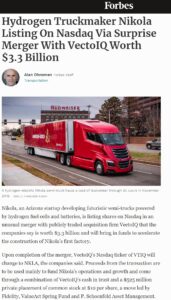
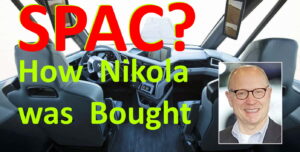
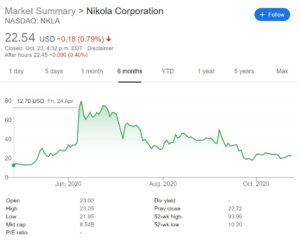
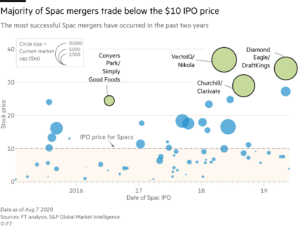
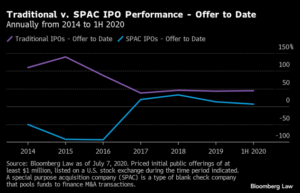




0 Comments